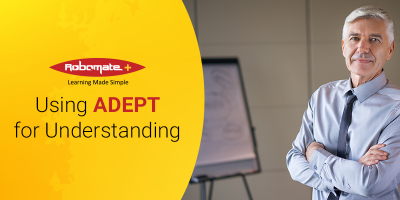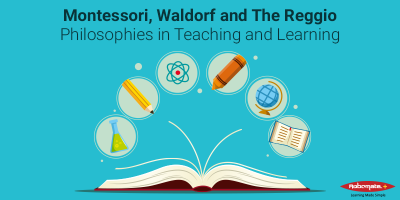State Board Commerce (XI-XII) - Test Papers
JEE Mains 2019 Question Paper Online Exam – 12th January (Morning)
For Answer Key Please Click here
JEE Mains 2019 Question Paper Online Exam – 11th January (Evening)
For Answer Key Please Click here
Detailed Commerce Subjects List in Class 11
Commerce can be defined as the exchange of goods and services. It includes business activities from production to the final consumer. Commerce has been trending as one of the most opted subjects by students after class X as it offers lucrative jobs after graduation. In order to select commerce as a subject in class XI, the student should know the subjects taught in commerce and should analyze one’s interest and strength in studying the subject. Given below is the Commerce Subjects List in Class 11 in detail.
Commerce Subjects List in Class 11
Apart from the selection of good Commerce Subjects, it is equally important to be dedicated to the study of commerce. The student who is interested in numbers, business and economics can opt for commerce. The main Commerce Subjects taught are accountancy, business studies, economics and Maths. In addition to the core Commerce Subjects, the students will have English or other languages depending upon the selection of the medium and a second language also.
Watch FREE HSC Class 11 Video Lectures
Accountancy Subject in Commerce
As the name says, the subject helps to analyze and understand the profit and loss of a business enterprise. The financial statement produced gives financial information about the business entity in terms of shareholders, managers, and success or failure. Accountancy can be classified into 3 divisions accounting, bookkeeping, and auditing. It helps in summarizing the expenditure in terms of transactions and events and then interpreting the results of the expenditure. Accountancy is the backbone of any transaction which happens in any business organization.
Commerce Business studies
The subject lays basics for studying MBA (Masters in Business Administration). The subject provides insights about business organization – its structure, function, operation management, human resource, and marketing. It helps in understanding how business activities impact society through employment, income, opportunities and standards of living. This one important part of the three core Commerce Subjects provides insights into professional life and corporate culture.
Economics Commerce Class 11
In simple language, economics is the study of the production, distribution and consumption of goods. The subject teaches us the relation between supply and demand, consumer behavior and cost concepts. This important component of the Commerce Subjectsalso deals with the topic of development, inequality, poverty, and governance. It is an interesting subject that gives insight into the economy, employment policies, the impact of international trade, etc. Economics is broadly classified into two types – microeconomics and macroeconomics. Economics is not just about money matters, economic reasoning in politics, law, psychology, history, marriage and family life, have been increasingly used.
Commerce with Maths subjects class 11
It includes algebra, trigonometry and geometry. While at the outset it seems these subjects are not required in commerce, but in reality, these topics will help you in preparing for competitive exams to pursue higher education.
Many students think Commerce Subjects are easy, when compared to other subjects such as Maths and Science. They are equally complex and provide you with competitive jobs, provided you hold professional qualification. Students with interest and aptitude should opt for Commerce Subjects. You passion to achieve career goals will help you climb the ladder of success easily.
Learning and Understanding Better with ADEPT
Learning is the most important aspect of education. Every student has his own caliber of reading and understanding. A number of techniques have been developed to help improve students’ learning experience. ADEPT is one such technique which is widely used by the students for a better understanding of difficult concepts. ADEPT is an acronym for Analogy, Diagram, Example, Plain English and finally Technical definition. By following simple A, D, E, P and T of ADEPT, even the most complex concepts can be understood within a short time.
A for Analogy – What is the topic like?
For every topic you study, there is a high chance that you have studied about something similar in the past. Analogy refers to that basic or small information which you already have. Try to compare the information you are learning at the moment to the information you understand thoroughly that you have learnt in the past.
D for Diagram – Visualization.
If you are unable to understand complex problems of Maths or processes in biology, then draw a diagram indicating the various steps as given in the text. You can also check Google images where you can find images for step-by-step procedures. Diagrams help in visualization and absorb the concepts. This will be a brainy job, as you need full concentration to understand the process.
E for Example – Experience the Concept.
Most of the chapters will come with the examples. Careful understanding of the example can help you understand the concept. In a few cases, group studies can also be helpful. You can take your time and understand the concept with logic.
P for Plain English – Use Simple Language.
Put down your understanding in plain and simple language. You need not to include all the technical terms, but try to explain the concept to a small child. This is a technique used by Richard Feynman. He used to explain his concepts to his class of students to make sure if he had understood it himself. If you are unable to explain the concept in plain language then it is most likely that the concept is not clear for you.
T for Technical Description – the formal presentation of the topic.
After the basic understanding of the concept, the next step is to use technical terminologies to give the formal look and score better. So try to formulate a description for the concept with the least possible number of words.
8 Tips on How to Focus on Studies and Get Ready for Exams
Adept for Understanding
ADEPT is a user-friendly technique of studying better, the students can make a checklist and proceed in a phase-wise manner. Mugging-up technical description and practicing the problems is no longer a practice. The concept plays an important role, once you are thorough with the concept then you can solve any kind of problems, you need not to rely on your workbook solutions to score better. Students who are clear with the concept will score well in both academics and also in competitive exams.
Before proceeding for technical description, make sure you can explain the process in your own words and have the capacity to solve the example problems and can explain it to fellow members. The diagram you have created for imagining the process is as per the concept and is giving the acute results.
When you are at analogy stage everything seems to be blurred without any clear understanding. Many students face this situation after hearing lectures. They have a vague idea about what they have learned and the process or the diagram which your teacher has shown. As you proceed from analogy phase to diagram example and simple language you will develop a strong foundation and confidence to solve any kind of similar program. A learning process requires not only information and details but all the connecting dots should be there to get a fruitful outcome. Feynman Technique can be used for putting the concept in simple language.
Feynman Technique has been developed by Richard Feynman who has won Nobel Prize in Physics n the year 1965. His technique is simple. On a plain paper write down the topic name to be studied and then start explaining the topic in simple language as if teaching to a new student. This exercise helps in knowing your level of understanding of the topic and most importantly what you do not know about the topic. At this point, you will be clear with your weak points on the topic. Refer the study material, read and again repeat the process. If you feel you are just paraphrasing the topic try to concentrate more and split the topic in as simple language as possible, study the example to be clear with the concept.
Make learning a joyful experience; it is natural to have doubts while learning. You can develop your own technique of learning and can have own explanations. The ADEPT technique can be applied to studying all types of subject. Whenever you start with any topic, make a list of ADEPT for each topic and mark once a stage is completed. This technique allows studying quickly with a clear concept.
Let’s look at an example of the ADEPT technique with the topic “Neurotransmission”
Analogy: This refers to neurons, the part of the nervous system which transfers information
Diagram: Neurons, connected to each other and transferring information

Example: The electricity is transferred from one connection to another by connecting wires.
Plain language: neurons are connected to each other and release substances which transfer information
Technical Information: Neurotransmitters, the chemical messengers released by the terminal end of neurons binds to the dendrites of the adjacent neurons and transfer the information.
Montessori, Waldorf and the Reggio philosophies in teaching and learning
A child’s brain is designed to learn and develop. Children should be given sufficient space to explore the space, environment, and opportunity. Early childhood education centers such as daycare, play school or preschool are aimed at identifying the potential skills of the children in a play-way method. They will be given an opportunity to analyze their environment and solve the queries raised by the little brains. Many child-centric schools follow student friendly approaches for learning such as Montessori, Waldorf and the Reggio philosophy. Parents should understand the concept behind each of these learning techniques to best judge the school which they intend for their children. The early steps of education foundation on tender minds will have an impact throughout their educational career. Colleges look for a student who have critical thinking ability and unique individuality and contribute to the college community.
Montessori Philosophy:
In a Montessori, children are allowed to work at own pace. A typical class is composed of a teacher, child, and the environment. The teacher creates the class environment and gives freedom to the students in limits, the student utilizes the created environment to develop himself and interact with the teacher for support and guidance. Dr. Montessori has designed learning materials for developing a child’s five senses for both younger and older students. It is a child-centered approach. Most of the Montessori schools will have fewer children and will be managed in a small area. A Montessori program may not be suitable for students who are over stimulated or aggressive.
The classroom learning materials are kept low shelves which allow easy access for the children, the children use the material as long as required and after finishing work, they are trained to place the material at the same place. Montessori toys called manipulative toys which alarms children if they are assembling or arranging it wrongly. Teachers will be the observers and will help the kids in solving.
A Montessori teacher is trained, credentialed Montessori with principles, concepts, and methods of Montessori. If a school claims to be a Montessori, it is not necessarily credentialed as there is no restriction for use of the word” Montessori”
Highlights of Montessori:
- They are progressive schools which have multiple-age children
- The teachers will be observing and helping children in the process of learning
- Children are free to move around and can engage with an article as long as they are interested
- Different age group children will be in the same area, which motivates younger children to learn and develops confidence in older children
How to support your Child Before and During the Exams
Reggio Philosophy:
Reggio, this methodology of teaching originated in Italy after World War II to rebuild society. The aim of this teaching method was to make better citizens. Although the Reggio method of teaching is not widely spread it does mark its presence in many educational institutions.
It is a project-based approach where a group of students is assigned a task. The projects will be based on the students’ approach which the teacher frames it as per the educational concept. The progress of the student is assessed by taking the photos, video and pointing out the observations. There is no formal training for the teachers.
Children learn to collaborate, solve problems and to resolve conflicts. The concept is introduced in early childhood education (toddlers and preschool children).
The toddlers are encouraged to explore their environment and when they come up with their questions and doubts rather than solving their questions, teachers assign it as a project. Students will be made to understand the concept. Examples: If a student comes up with a question of how we get fruits. Then probably teachers will ask them to make a project with different types of fruits, trees and make a garden explaining the growth of trees and the formation of fruits. The self-learning approach builds a strong understanding of the concept and zest to explore further.
Highlights of Reggio teaching:
- Children have control over what they are learning
- They learn by using their ability of observation, touch, and listening
- Children will be given an opportunity to explore their environment and fellow children and understand their relationships.
- Children must be allowed to express themselves
Waldorf Philosophy:
It is an essential requirement for the teachers of Waldorf School to be Waldorf certified and also schools need to have Waldorf certifications. There will be designated days for different activities such as painting, baking, gardening, etc. It is good for students, teachers, and parents to know what the student is expected to learn or do in the school today. There is definite predictability element. The schools will have a homely environment with a number of natural elements and toys included. There is no grading system, hence there is no judgment passed about the child. There is a “No” to electronic items such as computers, videos or electronics and there will not be any homework, test. The classroom sessions are mostly in the open outdoor environment. The reading and writing are introduced from first grade.
This education system encourages students ‘how’ to think in a given environment and not forcing them ‘what’ to think. It helps in the overall development of the student. It helps the student to adjust in any given environment rather than the ability to fit in a definite condition. Waldorf system helps in the intellectual, emotional, physical and spiritual development of the students. Waldorf learning starts at preschool and ends with twelfth grades.
Highlights of Waldorf teaching:
- Subjects are to be experienced and not taught and arts are included in the subjects being taught
- Waldorf teacher and her class collaboration will be there for seven years (it’s a rule)
- Academics and arts are integrated to enable development of the student in all sphere
- Eurhythmy is a unique approach of Waldorf curricula and is an integral part of it
- It’s a Child-centered and teacher-guided approach
Lastly, before finalizing any school make sure that the school is well-managed and fiscally sound.









